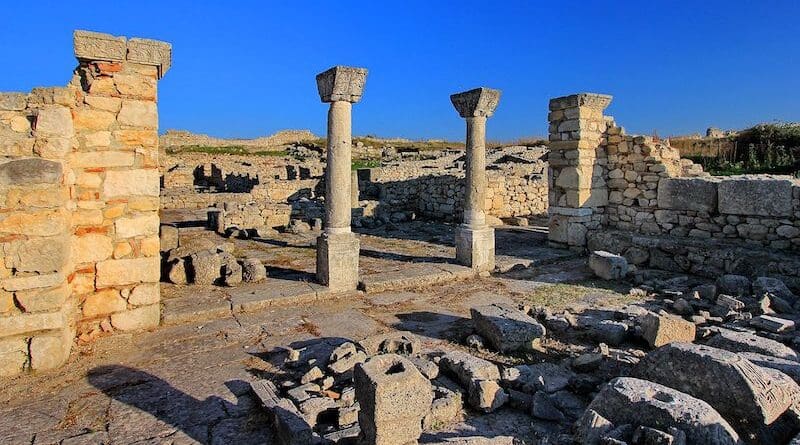Arnisa: Albania’s Ancient Archaeological Mosaic – OpEd
Albanian archaeological sites have revealed another facet of Illyrian civilization in the shores of the Ionian Sea, extending throughout the ancient cities of Dassaretae (Dassaretii), including the unique city of Arnisa nearby the river of Genius (Shkumbini). Illyrian lands in today’s hills of Divjaka are like amazing works of art, portrayed by Polybius, Titus Livius, Gaius Julius Caesar and Thucydides.
The alluring city of Arnisa, located in the heart of today’s Albania, although today is under ruins, was a dynamic commercial hub in antiquity representing the extensive culture of Taulantii (or Taulantians), ancient Illyrian tribe, during the VI and V Centuries B. C. Illyrian territories, east of the Drini River became part of the Eastern Empire. These territories in Southeast Europe, were occupied by the Slavs at the beginning of the 6th century, and its name changed into Arbëria in the 8th–11th centuries and finally to Albania.
Especially under the Illyrian dynasty of Bardylis (also Bardyllis, an Illyrian king, and the founder of the first attested Illyrian dynasty; Arnisa became a thriving region. According to Thucydides, it is a city nearby Durres and Apollonia, reaching the limelight in the VI Century BC. It is the center of the Taulantians (Illyrians).
It is believed that the name of the city of Arnisa has acquired various transformations such as: Gerinus and Gerunti, Gertunt, Geruni, in the writing of ancient authors Polybius, Livius, as they mention the military incursions during the war between the Romans and the Macedonians.
Arnisa is also mentioned by Julius Caesar, who mentions the city with the name Asparagum, it is confirmed by various scientific interpretations that this name is the Greco-Latin version of this city in the southern shores of Shkumbini River. Julius Caesar writes about Arnisa in his journal at approximately 48 B.C.
Claudius Ptolemy, a well-known ancient geographer from Alexandria, today’s Egypt, in the II Century AD, reveals the exact coordinates of the territory of the Taulantians. But unfortunately, none of Albanian historians and professional researchers of history, Illyrian language and geography have delved into the labyrinths of knowledge that Arnisa embodies; they even maintain an ambiguous posture when it comes to the very existence of Arnisa.
Procopius of Caesarea, a prominent late antiquity historian of the Roman Empire whose books are invaluable for shedding light on the history of the Balkans during the wars of Emperor Justinian the Great (527 to 565); he mentions the fortress of Genysios, when he writes about the reconstructions in the old Epirus.
Stephanus of Byzantium (VI century AD) was a Byzantine linguist and the author of an important geographical dictionary entitled Ethnica where he writes about cities and ethnicities, also mentions an Illyrian city called Sarnus and the ethnic name Sarnusios, we think that the name Sarnus-Sarnis is a genuine version of the Illyrian metropolis of Arnisa. In this very special city Seleucus I Nicator has allegedly conducted military training during some of his emblematic expeditions; archaeological artifacts illustrate this fascinating element.
From scholarly publications are emerging various fictitious locations were Arnisa would have been located; some historians place it in the ruins near Germenj and Bishtcukas, in the hills of Divjaka, an egregious mistake that many Albanian archaeologists have articulated about the city of Arnisa. They even connect Arnisa with the ancient ruins of Spolatë and Gradishtë in today Lushnjë.
The Spartan Army led by Brasidas (5th Century BCE) came to the ancient city of Arnisa of Taulantians, in the ancient region of Myzeqe. Brasidas died at the Battle of Amphipolis in 422 BCE, during the Peloponnesian war. Furthermore, Julius Caesar in the years 49-48 B. C. writes about his visit, arrival in the south of the river Genius the city of Arnisa, namely Asparagum, at this very same time he conducted the siege of Oricum.
Albania is a treasury of Archaeological sites, in this regard, a careful study of all objects discovered is paramount in order to preserve ancient history at its highest levels of accuracy. Historians and archaeologists have an immense duty to be impartial and extremely accurate when interpreting unearthed ancient pottery.

